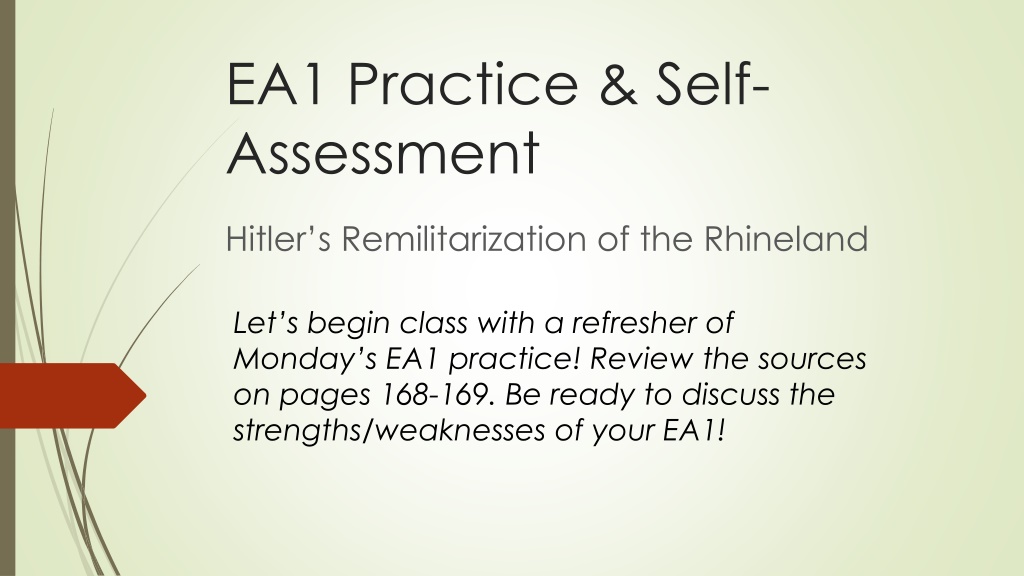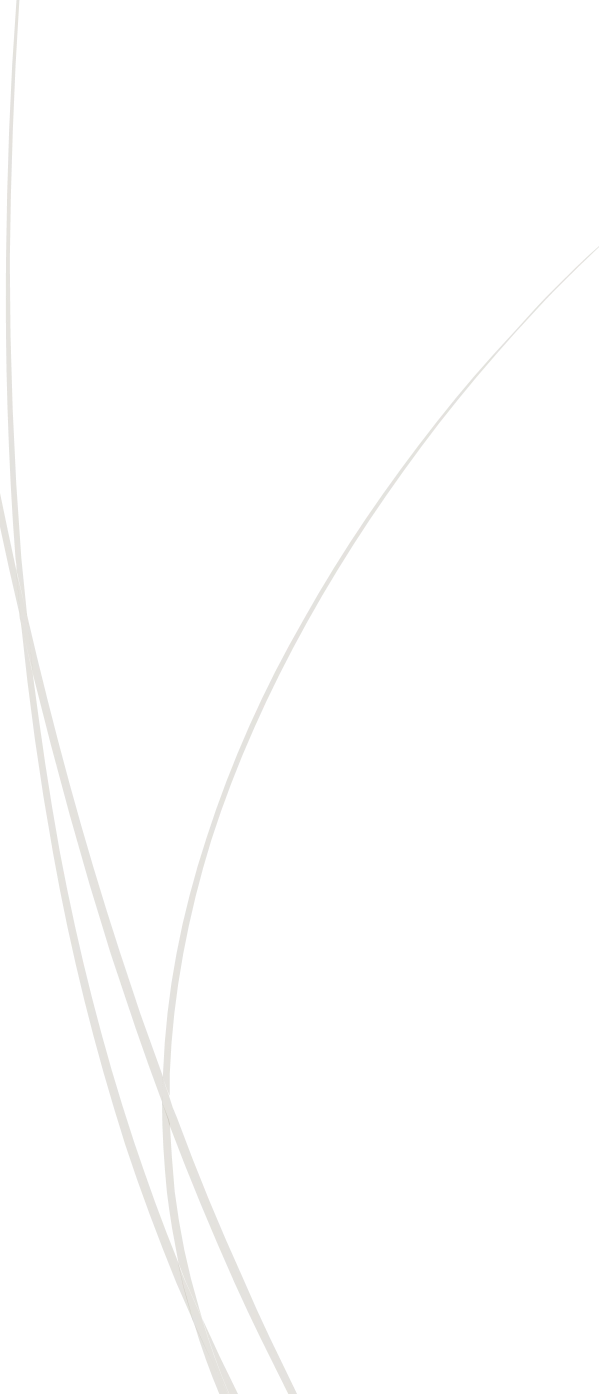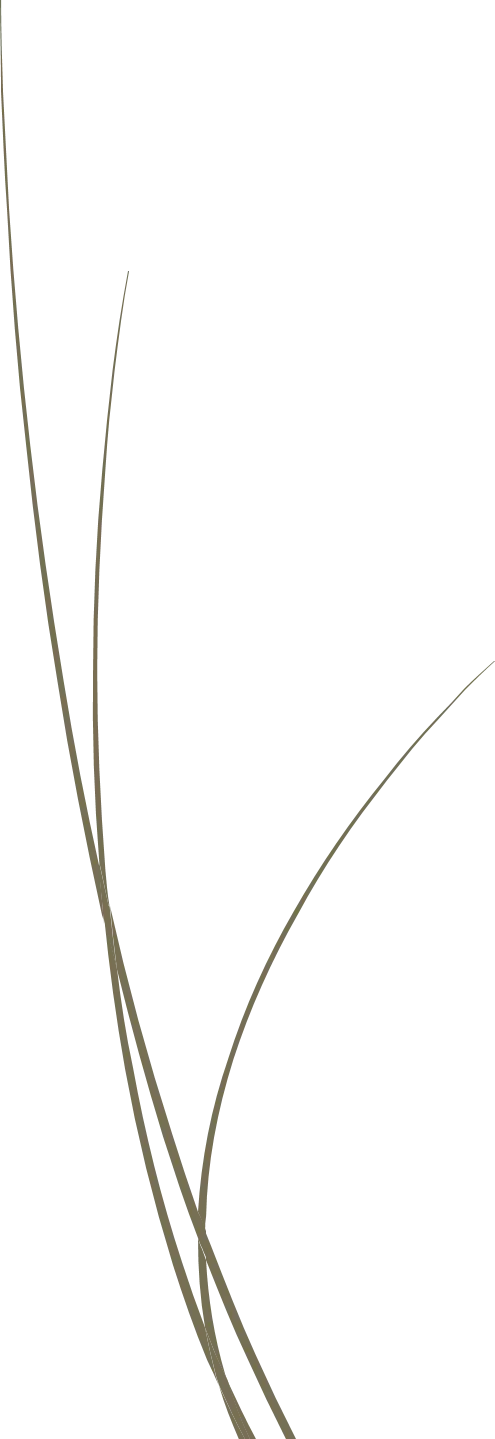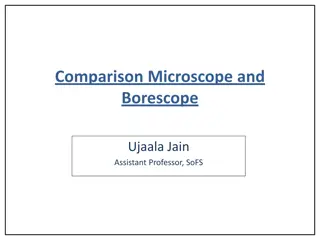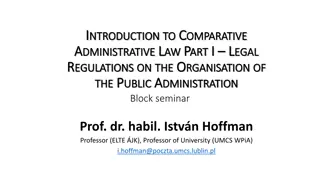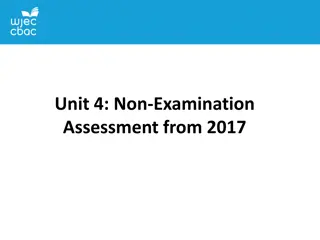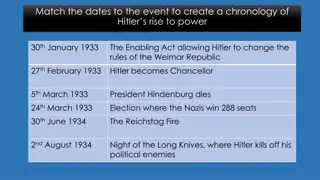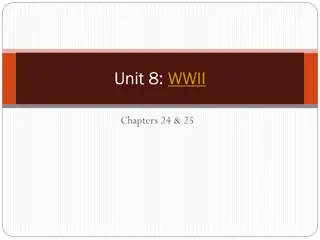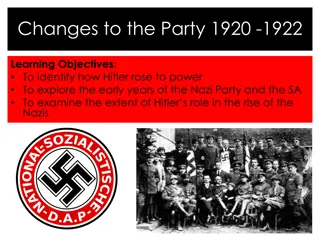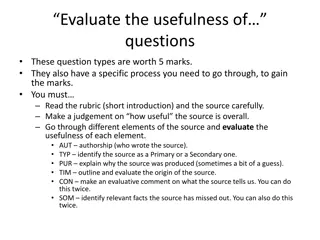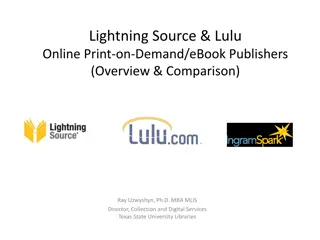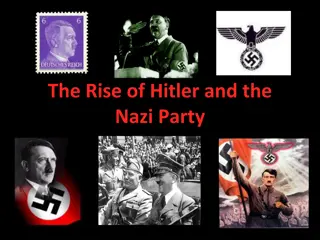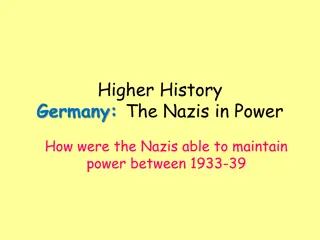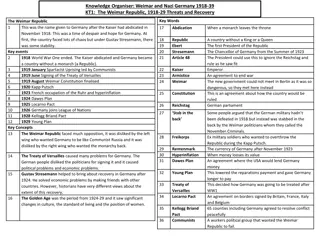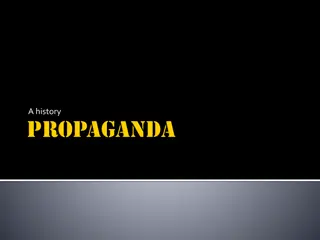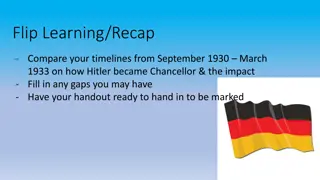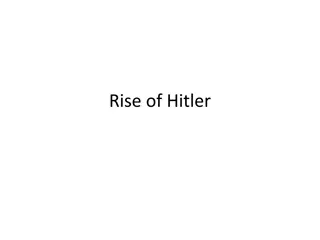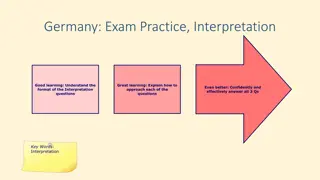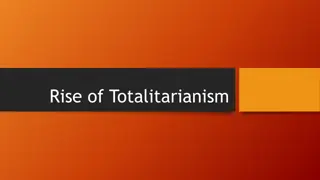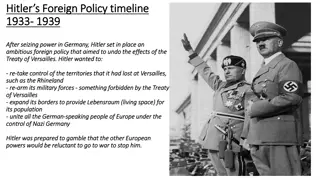Hitler's Remilitarization of the Rhineland: Source Analysis and Comparison
Explore the historical context and perspectives on Hitler's remilitarization of the Rhineland in 1936 through a detailed analysis of different sources. Discover the challenges faced by Britain, Hitler's true motives, and contrasting views on his actions from various viewpoints.
Download Presentation

Please find below an Image/Link to download the presentation.
The content on the website is provided AS IS for your information and personal use only. It may not be sold, licensed, or shared on other websites without obtaining consent from the author. Download presentation by click this link. If you encounter any issues during the download, it is possible that the publisher has removed the file from their server.
E N D
Presentation Transcript
EA1 Practice & Self- Assessment Hitler s Remilitarization of the Rhineland Let s begin class with a refresher of Monday s EA1 practice! Review the sources on pages 168-169. Be ready to discuss the strengths/weaknesses of your EA1!
Disclaimer!!! This document question switched questions 2 & 3!
First question, part a 3 marks According to Source A, why would it be difficult for Britain to resist German aggression in 1936? Navy is not prepared Involvement would jeopardize the position with Italy Army& air force are over-extended; incapable of providing defense To relocate army and Air Force from the Mediterranean would take two months Their current defense artillery is inadequate compared to the air threat of Germany
First question, part b 2 marks What is the message of Source B? The message of the source is that Hitler was trying to appear peaceful, but broke his word and blatantly ignoring the Treaty of Versailles and Locarno Treaties. Goose step = Nazi Germany military march Germany has no respect for Locarno Treaty (protected peace, post-war settlements & new boundaries i.e. Rhineland) (goose stepping on treaty) Pax Germanica (German Peace) = Mocking German intentions they claim peace even though their actions say the opposite; Hitler was promoting peace while actually re-arming and preparing for war Pray excuse my blunder! = Excuse German actions don t mean to be aggressive; just re-claiming what is rightfully theirs. The poem also suggests that going into the Rhineland was an accident or "blunder", but the cartoon shows the goose with a map and therefore it knows where it is going, and that it is doing wrong. The weapons strapped to the Goose represent the rearmament conference which rapidly increased Germany's armed forces and there is a map of Europe strapped to his waist, showing his territorial ambitions
Second Question 4 marks (actually 6 marks!) Compare and contrast the views expressed in Source C and Source D regarding Hitler s motives for his actions in 1936. Compare Both address the threat of the Franco-Russian alliance Both portray France as the aggressor Both mention the problems created by the Versailles settlements and new borders Contrast C portrays Hitler as aggressive (wanted to achieve objectives through unilateral military action) while source D shows that Hitler attempted peace (needs to protect security in Europe) Source C says his motives were based around Britain s willingness to agree to German remilitarization while source D says it was Hitler acting defensively nothing to do with Britain Source D portrays Germany as not being treated equally by other European powers
Third question 6 marks (actually 4 marks!) With reference to its origin, purpose and content, assess the value and limitations of Source C for a historian studying the reasons for the remilitarization of the Rhineland. Value: Origin: Specialized in British history; informative Purpose: Informative & presents both sides (Germany & Allies) Content: Gives perspective of Germany s fear of French encirclement (Franco-Russian alliance) Limitation: Origin: British-focus Purpose: Does not inform reader on remilitarization process; just Rhineland invasion Content: Leaves out other reasons for remilitarization, like popular support & League s response
Fourth question 9 marks Using these sources and your own knowledge, examine the reasons for Hitler s remilitarization of the Rhineland. Source A: Britain s military is unprepared and inadequate Source B: Germany ignored Treaty of Versailles & Locarno; This was an accident/blunder Germany was attempting to appear peaceful Source C: Britain willing to agree to remilitarization, Franco- Russian Alliance, Treaty of Versailles unfair Source D: Hitler acting defensively; France is aggressor Own Knowledge: Reunification of German people, France unwilling to respond, popular support, internal problems in Europe/U.S., League wouldn t respond (Abyssinia!) Discuss How would you organize this into an essay?
Fourth Question Rubric Marks 7-9 Descriptor The response is focused on the question. Clear references are made to the sources and these references are used effectively as evidence to support the analysis. Accurate and relevant own knowledge is demonstrated. There is effective synthesis of own knowledge and source material. The response is generally focused on the question. References are made to the sources, and these references are used as evidence to support the analysis. Where own knowledge is demonstrated, this lacks relevance or accuracy. There is little or no attempt to synthesize own knowledge and source material. The response lacks focus on the question. References to the sources are made, but at this level these references are likely to consist of descriptions of the content of the source rather than the sources being used as evidence to support analysis. No own knowledge is demonstrated or, where it is demonstrated, it is inaccurate or irrelevant. The response does not reach a standard described by the descriptors below. 4-6 1-3 0
EA1 GRADING SCALE 24-21 = 7 20-19 = 6 18-16 = 5 15-13 = 4 12-10 = 3 9-8 = 2 7-1 = 1
